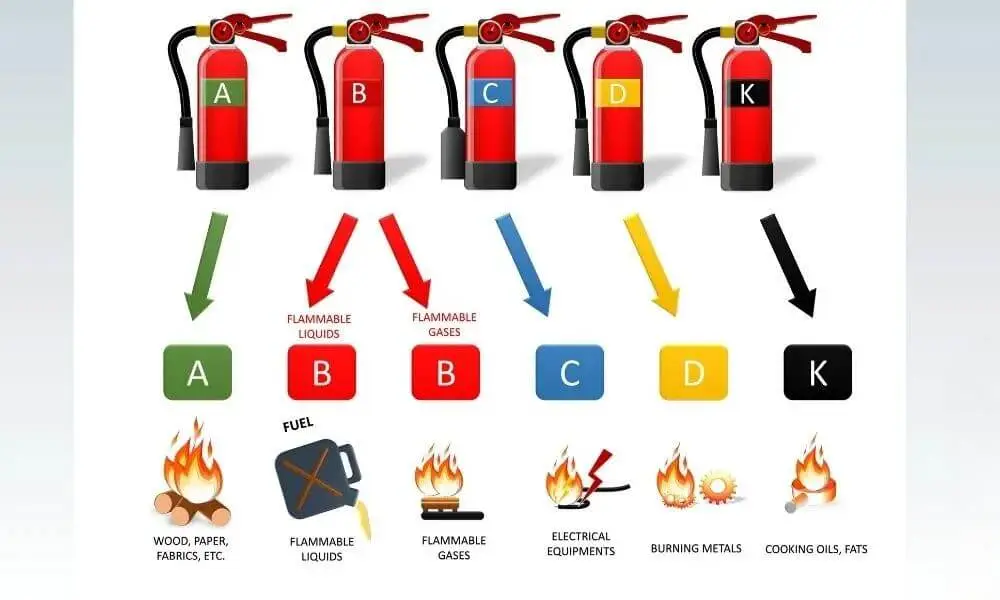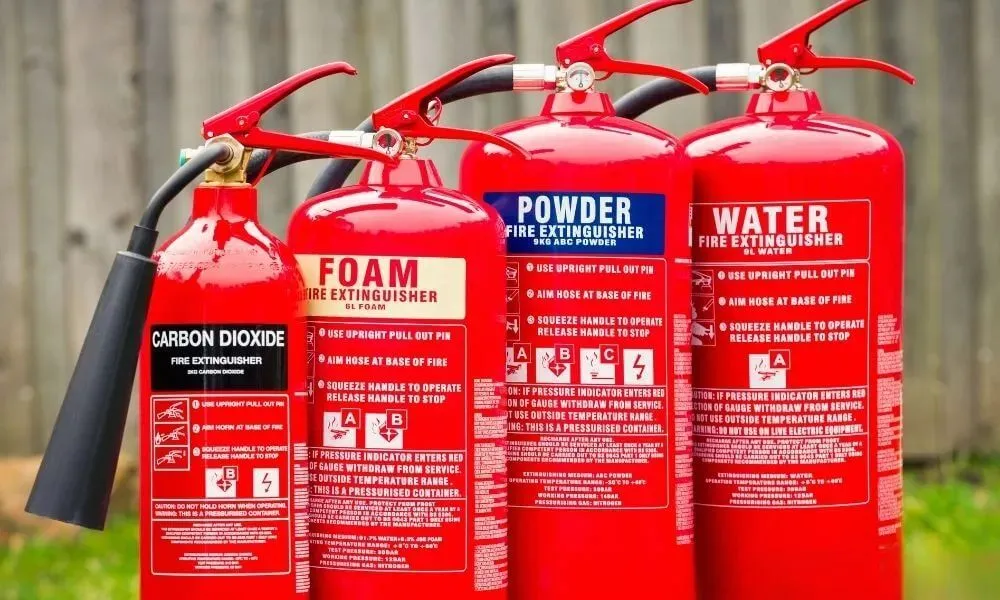What Do the Symbols on a Fire Extinguisher Indicate? The symbols on a fire extinguisher indicate the type of fire it’s designed to extinguish, such as fires involving wood, flammable liquids, electrical equipment, combustible metals, or cooking oils.
Fire safety is a matter of high importance. The capacity to interpret fire extinguisher symbols accurately can be crucial during emergencies. So, what do these symbols mean? They’re guides to which type of extinguishers you should use to extinguish fires effectively. In this blog post, we’ll demystify these symbols, enabling you to handle fire-related emergencies better.
What Do the Symbols on a Fire Extinguisher Indicate?
If you’ve ever glanced at the cylindrical fire safety device in your home, office, or school and pondered its symbols, you’re not alone. These symbols, or pictograms, provide critical information about the type of extinguishers and the kind of fires they are designed to suppress. Each symbol corresponds to a particular class of fire: A, B, C, D, or K, each of which denotes the nature of the flammable materials. These include organic materials, flammable liquids, electrical equipment, metals, cooking oils, and fats.
Occasionally, some symbols are circled by a red slash, warning against using the extinguisher on certain types of fires, as it could potentially exacerbate the situation. These symbols act as a quick guide, enabling you to select the appropriate fire extinguisher during an emergency.
Types of Fire Extinguisher Symbols
Symbols on a fire extinguisher exhibit diverse shapes, colors, and designs. Each serves a purpose in guiding the user on effectively and safely utilizing the device.
What do the Colors Mean?
Fire extinguisher colors are not merely decorative; they denote the type of fire the extinguisher is designed to tackle. For instance, foam extinguishers typically bear a cream label, signaling their utility in extinguishing fires involving flammable liquids.
Importance of Pictograms
Pictograms offer visual guidance for operation, facilitating the usage of the extinguisher during an emergency, even without a common language.
Types of Fire
Fires are classified into different types based on their fuel source, which in turn influences the best extinguishing agent and method for suppressing them.
Class A Fire
Class A fires involve combustibles like wood, paper, and textiles, leaving ashes behind. Water fire extinguishers, identifiable by their red color, are ideal for dealing with these fires.
Class B Fire
Class B fires involving flammable liquids and gases take us into more dangerous terrain.
Flammable Liquids
This category belongs to flammable liquids such as gasoline, oil, and paints. Envision a paint can tip over near an open flame – quite terrifying.
Flammable Gases
Flammable gases like propane or butane also constitute Class B fires. Notice the caution signs at gas stations? They’re there for a reason!
Class C Fire
Class C fires, involving electrical fires from equipment like computers, pose a unique challenge in our modern era.
Class D Fire
Class D fires involve flammable metals like magnesium and titanium, a rare but intimidating adversary.
Class K Fire
Finally, we have Class K fires. These typically occur in kitchens and involve cooking oils and fats. Wet chemical extinguishers, recognizable by their yellow color, are most effective in tackling these fires.

Fire Extinguisher Symbols
A fire extinguisher can handle types of fires divided into classes, each represented by a unique symbol.
Class A Fire Extinguishers
A green triangle with the letter ‘A’ and a symbol of burning materials represents Class A fire extinguishers for ordinary combustibles like wood, paper, and cloth.
Class B Fire Extinguishers
Featuring a red square with the letter ‘B’ and a fuel can symbol, Class B fire extinguishers are meant for flammable liquids like gasoline, grease, and oil-based paints.
Class C Fire Extinguishers
A blue circle contains the letter ‘C’ and an electric plug and socket symbol, indicating that the Class C fire extinguisher is for electrical equipment fires.
Class D Fire Extinguishers
A yellow decagon with the letter ‘D’ and a gear wheel symbol represents the Class D fire extinguisher, specifically designed for flammable metals.
Class K Fire Extinguishers
The black hexagon symbolizes Class K, used for cooking oils and fats.
Why Fire Extinguisher Symbols Matter?
Knowing what do the symbols on a Fire Extinguisher indicate is very important because how to read these symbols can be a matter of life and death in a fire situation. They also have significant legal implications.
Enhancing Safety and Readiness
Symbols provide at-a-glance information about an extinguisher’s capabilities, ensuring you use the right one for each fire type.
Legal Implications
Misunderstanding these symbols could lead to misuse, property damage, or legal repercussions.
Conclusion
We tried our best to answer what the symbols on a Fire Extinguisher indicate. Understanding fire extinguisher symbols is essential for safety and legal compliance. They help ensure you use the right tool for the job when every second counts.
Frequently Asked Questions
1. What do the symbols on a fire extinguisher indicate?
Fire extinguisher symbols represent the types of fires the extinguisher can handle and provide visual instructions.
2. What does the color of a fire extinguisher symbol mean?
Colors signify the type of fire that the extinguisher is designed to combat.
3. Are there legal implications for misusing a fire extinguisher?
Yes, misuse of a fire extinguisher due to misunderstanding the symbols can lead to legal issues.
4. What are the symbols for the different fire extinguisher classes?
Class A is a green triangle, Class B is a red square, Class C is a blue circle, Class D is a yellow decagon, and Class K is a black hexagon.
5. Why are pictograms important on fire extinguishers?
Pictograms provide a universal language for operating fire extinguishers, making them accessible to anyone, regardless of language fluency.
Our Facebook Page
